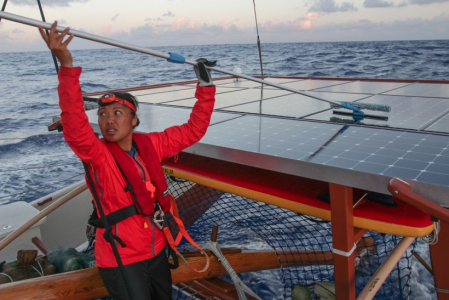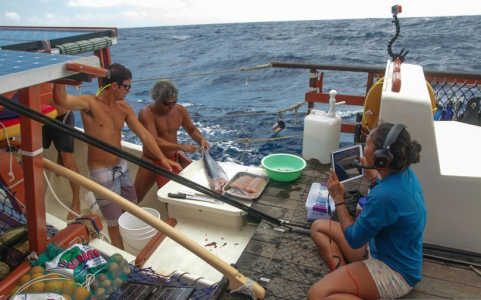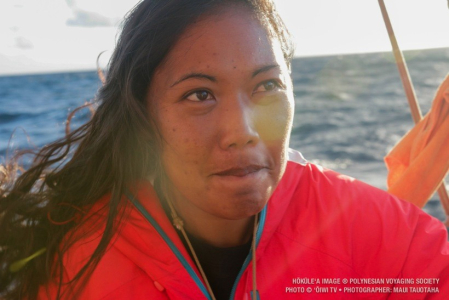Monitoring the Health of Our Oceans Through Water Quality Measurements
- Posted on 12 Jun 2014
- In Crew Blogs, Education, Photo Galleries
The ocean is human, it is alive.

Pictures really don’t do justice to some of the visuals out here. If ever there was a Mt. Olympus, the Greek gods would live just behind those clouds.
Water is what makes up most of our body and what makes up most of our island Earth. Like going to the doctor for a checkup and having your temperature, blood pressure, and pulse taken, water quality measurements record the vital signs of the ocean. By monitoring these signs we can understand the health of our ocean, which helps us to make better decisions to ensure a healthy and sustainable ocean for generations to come. It is our responsibility to do this because we can.
Aboard Hikianalia, the science and technology canoe, we’ve been taking the vital signs of the ocean, including its temperature. Did you know that cool water is more nutrient-rich than warm waters? More phytoplankton grows in this water, and bigger organisms eat these smaller life forms, so you see more sea life in cooler waters. At the equator is an upwelling of cold, nutrient-rich water, and we are definitely seeing this in cooler temperature readings and an increase in marine life. In fact, as we were at around seven degrees north we caught an ono and a mahimahi. A mūhe’e (squid) came aboard, and many mālolo have flown onto the canoe. Just last night (I estimated our latitude to be at four degrees), one of the crew said she saw a small shark while on watch. Another crew mate said when he shone his light into the water, he could see many small squid and mālolo swimming.
The first oceanic voyagers who came to settle the Hawaiian islands had such a deep intimate relationship with their surrounding environment. It is my personal goal to become more intimate and connected to my environment by paying attention to and listening to the “talk of the sea,” as my kūpuna call it. I feel that this ocean monitoring project parallels what they did, but in a more technological way, using science to record the minute details of our honua. Jim Foley from the University of Hawaiiʻs Center for Microbial Oceanography: Research and Education (C-MORE) is the lead scientist for this project. I am just the lucky individual who gets to carry it out as I voyage down to Tahiti sailing in the wake of my ancestors and move forward to cultivate relationships to mālama honua for our life-giving and life-sustaining mother ocean.
To learn more about the work being done by C-MORE and the education and outreach products it provides for teachers, students, and the community please visit this websites: http://cmore.soest.hawaii.edu/
Hokulea and Hikianalia science at sea: http://learningcenter.hokulea.com/education-at-sea/science-at-sea/






